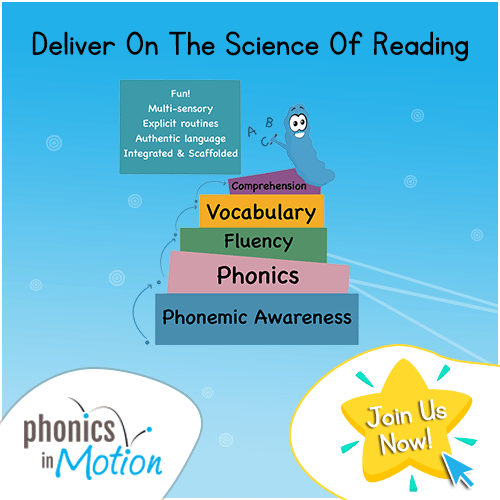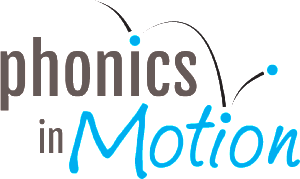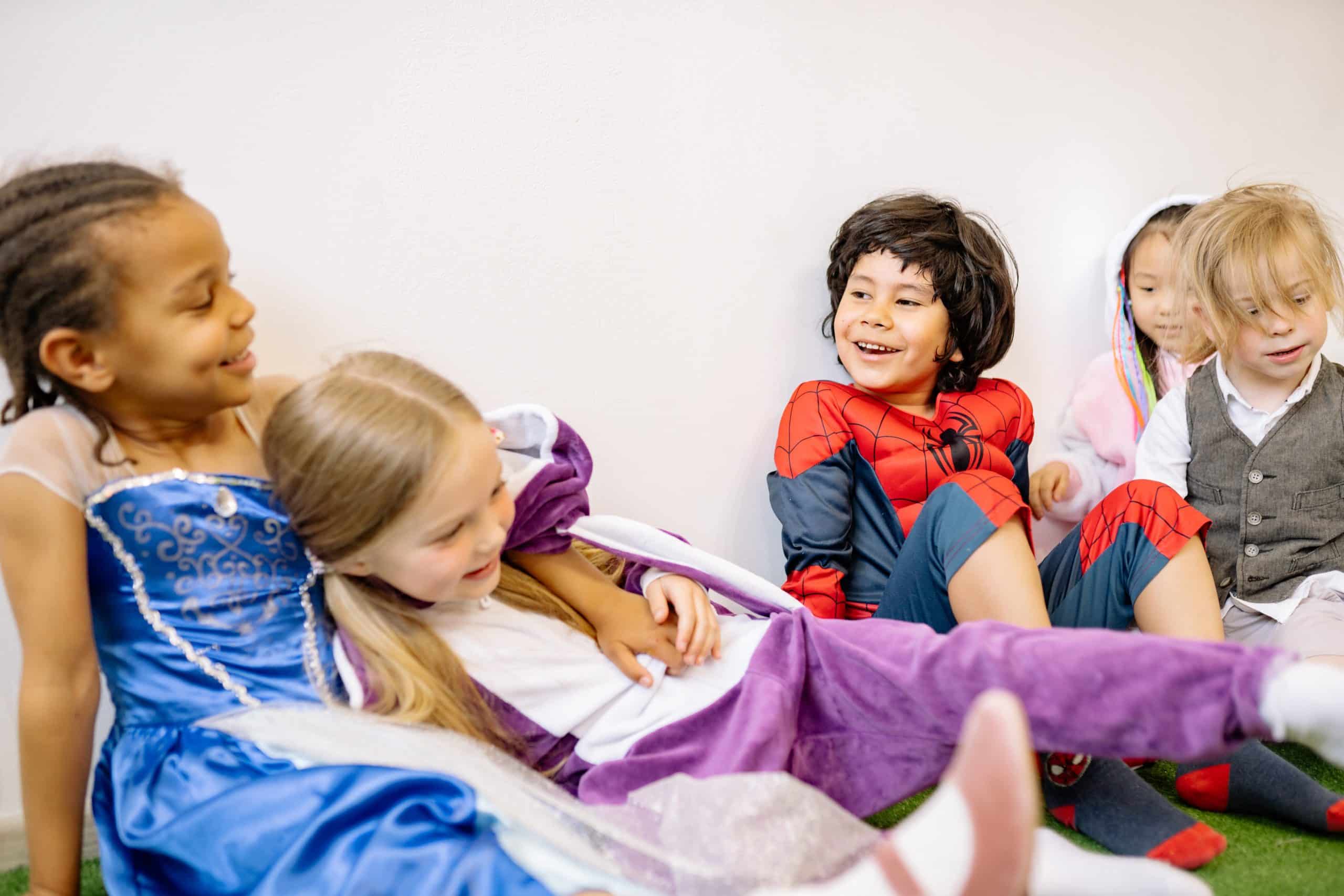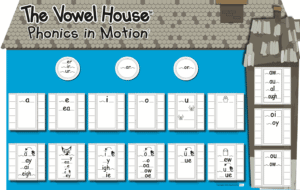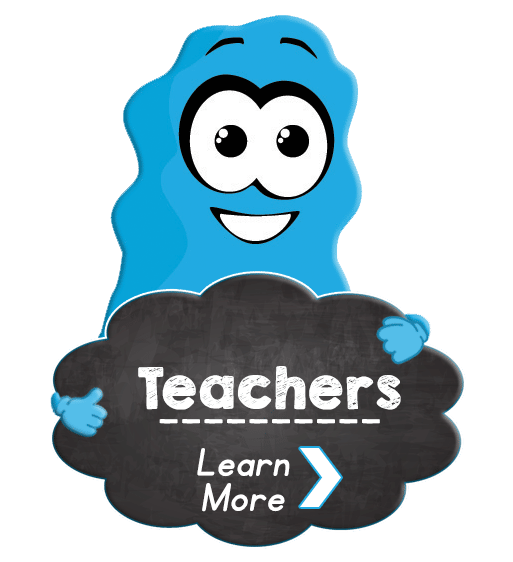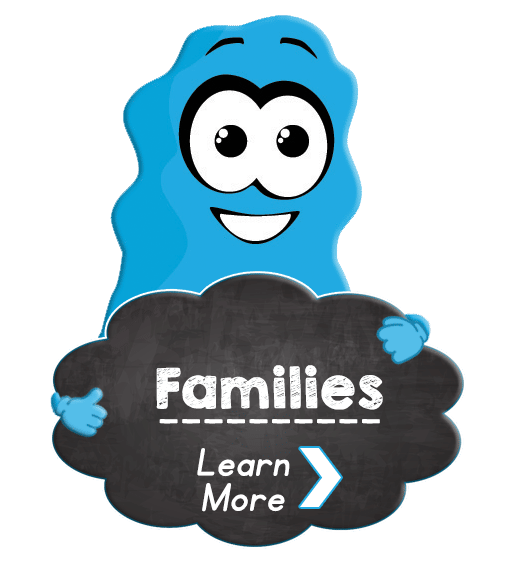Moving Beyond Sound Walls: PIM’s Approach to Reading Instruction
Traditionally, primary education classrooms have utilized word walls. While they may have been somewhat successful, literary science shows that early learners respond better to and have better learning outcomes from sound walls.
The problem is, word walls are often not used frequently throughout the whole year. Why? Teachers end up ditching them when they realize that they aren’t working as well as previously thought.
Students become overwhelmed or don’t use them as a reference chart for long. It takes a lot of effort to continuously use them in the classroom, students don’t respond to them well, and the teacher ends up finding other ways of working in reading instruction.
Many forward-thinking teachers are incorporating sound walls in their classrooms as they realize their effectiveness in teaching reading skills. Sound walls are a recent addition to early literacy environments, but making the switch for your students couldn’t be easier.
What Are Word Walls?
In the past, word walls were a necessity in kindergarten classrooms. As teachers taught new words and pronunciations, the words were put on a wall next to the correct letter to be displayed in the classroom. Students could refer to this display for reading or spelling purposes.
The words placed on the wall could be high-frequency words, sight words, or just words that were learned during a particular unit study. Word walls focus on print-to-speech instructional methods.
Designed to help students retain vocabulary and spelling, word walls have played an important role in primary education. However, teachers often find that they do not completely serve this purpose and can sometimes cause confusion.
One tricky part of word walls is that they do not differentiate between words that start with one letter but remind them of another. You can imagine how confusing it is to teach “cake” with a C, but then also “circle” is under the same heading.
Word walls are great for making vocabulary words accessible in the classroom, but often teachers find that they limit students to words already taught. They do not provide the skills needed for students to attempt new words and do not encourage advancing reading skills independently.
What are Sound Walls?
Sound walls are very different in that they focus on providing foundational skills that allow the exploration of phonemes. We are surrounded by oral language from the moment of birth, and hearing subtle differences is a skill young learners have been developing for years.
As educators, we know that young learners come into the classroom able to identify individual phonemes but often cannot identify letter combinations. By identifying those differences, sound walls focus on speech to print instruction, a much more natural way to teach reading.
Students focus on the manner and placement of the parts of the articulators in making the phoneme. By teaching students phonemes instead of letters, they are much more capable of figuring out words on their own.
For example, the words hair and bear are spelled differently, but you will see them grouped together because they share a phoneme. When early learners realize that the same sound can be made by different letter formations (graphemes), they quickly pick up on spelling patterns.
Sound walls often have pictures of mouth formations so that students can differentiate between phonemes.
How to Switch From Word Walls to Sound Walls
Making the switch from a word wall to a sound wall may be a bit of a learning curve, but once you see the benefit, the time investment will prove itself worthwhile.
A sound wall is often divided into different types of phonemes, including consonants and vowels. Consonants are further separated into stops, fricatives, glides, liquids, and nasals, as well as voiced and unvoiced consonants.
Vowels are also categorized, including different phonemes such as /oi/ and /ou/, and a separate section for tricky r-controlled vowels.
Switching your classroom from a word to a sound wall and explicitly teaching phonemes can be integrated into day-to-day activities. Unlike specific words that are left behind when you move from subject to subject, phoneme instruction can be incorporated in nearly every activity.
If this seems confusing compared to the methods you’re used to, don’t worry. Once you start introducing the concepts to your students, you will see how easily they catch on and how their reading abilities explode.
How Do You Teach Sound Walls?
So, how do you actually teach students to use sound walls? Well, you explicitly teach phonemes.
It is necessary that educators directly model the correct pronunciation of the phoneme for students. Specifically modeling is a key component of teaching students how to read. We can never assume that children already know foundational skills before they enter the classroom.
Starting with one phoneme at a time, you introduce the phoneme to your students fun and inviting waiting. Show students where to place their tongues and how to make a proper mouth formation.
Some teachers find it useful to use a mirror as a technique for showing correct mouth formation. Students may not catch on to this right away, but with repeated exposure, they will learn with time.
Forging a strong, positive relationship with learning how to read is vital, so be prepared to craft a patient, engaging environment.
As you introduce a single phoneme, you can link it with a grapheme and stick it on the wall. Once students are able to make the connection between the phoneme and grapheme, you can begin to link it with words. Including a picture related to the phoneme can help serve as a reference when students are completing future work.
Properly using sound walls gives students time to identify, isolate, and manipulate a phoneme. When each individual phoneme is given dedicated instruction time, students are able to make connections and thrive in a learning environment.
Scaffolding and connecting all concepts together is vital for proper reading comprehension. Eventually, as you continue to use sound walls throughout the school year, you can work on the gradual release of responsibility, and students can continue to apply learned skills to other words.
Are Sound Walls Enough?
While sound walls are a step in the right direction for reading instruction, there are still some concepts that can be improved on. For example, the pictures of mouth formations can be confusing.
Try making the /long o/ (like in so) and notice your mouth shape. Now, try the /short o/ in “octopus”. There’s a difference, right? But do you think you could easily identify the differences in a picture?
Noting subtle mouth formations is challenging even for adults in some cases. So while sound walls are more effective and provide valuable information, sometimes they can leave early learners a little confused. When children are first learning pronunciation, their mouth formations and tongue placement may differ a little, and they may be anxious about not doing it perfectly
The move from word walls to sound walls is well-intentioned, and student literacy outcomes benefit from them. However, it is time to consider whether or not we can take this another step as educators and simplify the process even further.
How PIM Helps with Sound Walls
Phonics in Motion understands the importance of sound walls and the foundational skills that come with them. However, we believe that students must also be able to “anchor” the phoneme in muscle memory.
We move beyond sound walls by introducing a Kinesthetic Motion for the Phoneme (KMP). KMPs are motions that students tie to each phoneme, removing the stress of remembering mouth formations.
By using developmentally appropriate instruction, Phonics in Motion makes learning fun and capitalizes on the natural abilities of the learner. The KMP is the gross motor representation of the fine motor articulation of the phoneme.
In addition to the 44 phonemes that sound walls offer, PIM also offers a KMP for some chunks in our language (e.g. -tion, -ed, -ing, -ong, -ang). When reciting a silly poem together and using the Kinesthetic Motion for Phonemes (KMP), the learning is engaging and fun.
In discussions with children, we talk about the tension needed to produce certain sounds (e.g tension needed for an /s/ or /sh/ sound vs /w/ or /p/. (It teaches kids how we feel that phoneme).
Students learn the 44 phonemes by playing with poetry or while saying and motioning things like, “It’s so, so silly.” Learning is natural. Tongue position, tension, and using the KMP to feel the “tension” to give the phoneme a concrete anchor that children carry with them in their muscle memories.
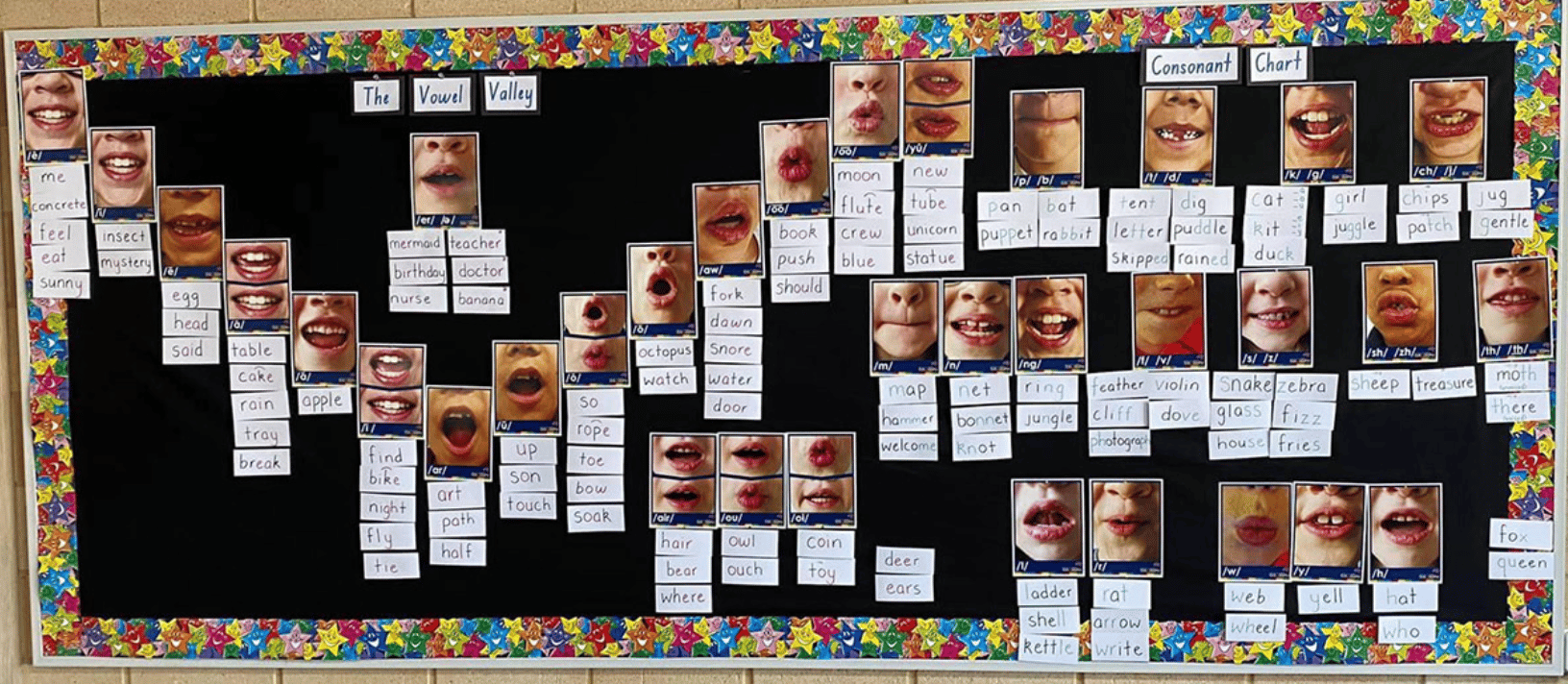
PIMs’ Answer to Sound Walls: The Vowel House
In addition to the motions to teach the phonemes and their articulation, PIM offers a visual representation and an organizer for the vowels in the Vowel House.
The Vowel House is a sound wall in that words are organized based on the phonemes, not their spellings! Vowels are categorized into short vowels, long vowels, diphthongs, and r-controlled vowels. The primary spelling is taught first.
As alternate spellings are developed, they are added to the appropriate window of the vowel house. Students operate from the question “What do you hear?”, perform the KMP, locate the window that makes that sound, and then become able to discuss the various spellings.
They also learn which spelling would actually work based on the rules for the markings in the Vowel House windows. For example, when wanting to write
the word “play,” students learn that the a_e and ~ai__ spellings would not work because there must be a letter present to spell the word correctly. You cannot write pla__e or plai___.
A letter must be there to make those spelling choices correct. Children focus on the phoneme and then use context to connect it to the correct spelling.
With Sound Walls, How Do You Know What Your Students Are Actually Hearing?
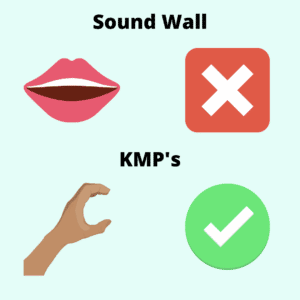
The KMP (motion) and the Vowel House that Phonics in Motion presents are easily observable by both the teacher and the student. Learning is easily monitored as the child acquires the skill.
When you say, “Show me what you hear,” your kids literally show you what they hear by performing the motion for the phoneme. Teachers can present the KMP and are also able to observe a student’s match of the KMP to the articulated sound.
When errors are made, teachers can quickly note and correct misrepresentations.
Conclusion
While sound walls are a huge step in the right direction for improving early literacy outcomes, there are still ways to improve your instructional methods. To remove the stress and confusion that comes with teaching and learning to read, it is best to incorporate a multi-sensory, whole-body approach to learning.
Phonics in Motion is committed to providing educational instruction that removes barriers and allows children to thrive in literacy settings by introducing kinesthetic movement in the classroom. This unique approach was developed by Dr. Terry Kindervater and has significantly improved literacy outcomes across classrooms in America.
If you’re curious about how Phonics in Motion can amplify your teaching strategies and encourage notable outcome improvement in your classroom, check out our exclusive e-book. We outline proven step-by-step methods of incorporating kinesthetic movement in the classroom.
If you’re a teacher or administrator interested in learning more about how to incorporate the Phonics in Motion system into your classroom or school, visit our website at https://phonicsinmotion.com/store/
Like sound walls, Pim presents speech to print, but thanks to the kinesthetic motion for each phoneme, the techniques are embedded in the child’s memory. And best of all, the learning doesn’t stop when the student has left the room that the sound wall is in. Learners carry their Phonics in Motion “Kinesthetic Motions for the Phonemes” everywhere they go! Even, to recess … and yes, home too. Thanks for reading!
